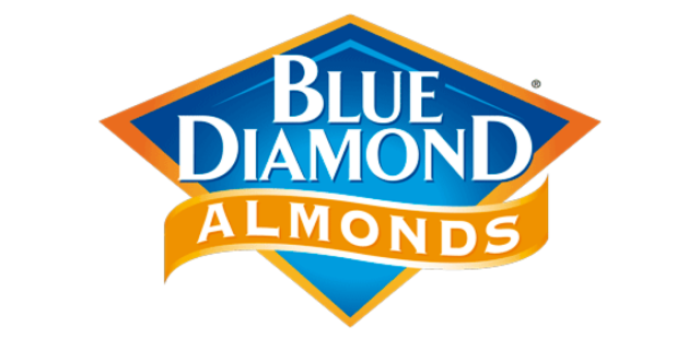Project title: BDG Climate-Smart Program
Type of project: business implementation
SDG(s) relevant to the project: 13, 15
Topic(s): net zero and Scope 3 emissions, nature-positive approaches and regenerative agriculture
Product(s): almonds
Project end date and duration: February 15, 2024 (7 months) (year 1 of a 5-year program)
Abstract: Through funding from the newly launched USDA Partnership for Climate-Smart Commodities Program, farmer-owners of the Blue Diamond Growers (BDG) cooperative planted cover crops in over 17,000 acres (6,880 ha) of almond orchards —covering an amount of land larger than the island of Manhattan.
This is the first phase of a 5-year, $45 million project designed to reduce Scope 3 emissions for BDG, combat climate change and mitigate its effects on almond farmers, while also increasing the on-farm biodiversity for pollinators and wildlife. This program provided farmers cover crop seed at no cost and provided a financial incentive for planting cover crops after the 2023 harvest. By February 15, 2024, cover crops had been planted in 17,000 acres of almond orchards across 91 farms.
Cover crops are estimated by the California Department of Food and Agriculture to sequester an average of 2 MTCO2eq per acre per year. The cover crop species mixes were selected by the NGO, Project Apis m., for their food and nutrition value to honeybees and other pollinator species, thereby enhancing pollinator health while also increasing the plant and insect biodiversity of the orchard. Cover crops have also been documented by the University of California to increase water’s ability to infiltrate orchard soils. This helps combat both drought and excess rainfall conditions by letting soil capture and hold more moisture. As increased variability in rainfall is expected from climate change, the practice of planting cover crops not only fights climate change by sequestering carbon, but it also increases plant and insect biodiversity and helps make the almond orchard more resistant to the effects of climate change through better soil water infiltration.
The 2023 activities serve as year 1 of a 5-year project which also includes the planting of conservation cover (perennial bee pastures), hedgerows, and whole orchard recycling (an innovative carbon sequestration technique used at the end of the commercial life of an orchard). The BDG climate-smart program builds upon its successful Orchard Stewardship Incentive Program, which pays farmer-owners more per pound of almond for engaging in sustainable agriculture. Through these initiatives, BDG has fostered stronger connections with new and existing customers who share goals around climate change mitigation and biodiversity enhancement.
Impact and Outcomes: Blue Diamond Growers (BDG) is a farmer-owned cooperative producing almonds in California, with approximately 3,000 member farmers who profit-share from the company’s operations and sales. As the world’s largest almond company, BDG has tracked market research on retailers and food manufacturers making a commitment to reducing carbon emissions in their supply chains. These companies also seek to partner with suppliers to reduce their risk from climate change. Given the anticipated increase in rainfall variability due to climate change, resiliency to both dry and wet conditions is crucial to maintaining almond production. Research by the University of California and state agencies has highlighted the multifaceted benefits from using cover crops in California almond orchards. First, by adding organic matter to the soil, cover crops are a means of sequestering carbon out of the atmosphere. Second, appropriate cover crop species can provide pollen and nectar to native and commercial pollinator species, enhance biodiversity, and make additional nutritional resources available to these vulnerable populations. This also increases the potential plant and insect biodiversity of the almond orchard. Additionally, root channels and organic matter created by cover crops can help improve soil water infiltration, reducing runoff potential and increasing water retention during droughts and heavy rainfall.
In 2023, BDG farmer-owners planted cover crops on over 17,000 acres (6,880 ha) of almonds orchards. This was supported through a $45 million award from the USDA for advancing climate-smart practices in US agriculture. According to estimates from The California Department of Food and Agriculture (CDFA) Healthy Soils program, cover crops may sequester up to 2 MTCO2eq per acre annually (COMET-Planner CDFA Healthy Soils values).
Additionally, both native and introduced pollinator species benefit from the increased biodiversity provided by flowering cover crops. Almonds and many other crops rely on insect pollination —primarily from honeybees, which are negatively impacted by introduced parasites and diseases. Researchers have concluded that almond farmers can augment pollinator health by providing diverse sources of pollen and nectar in the orchard. Carefully selected cover crops are a key tool for farmers to provide that pollen and nectar.
BDG set a target of planting cover crops in 10,000 acres of almond orchards for 2023 as the first year of its 5-year project. The response from the 91 participating growers exceeded expectations, resulting in over 17,000 acres, surpassing the land area of the island of Manhattan in New York City. This significant accomplishment marks the beginning of BDG’s Climate-Smart Program, positioning BDG as a leader in promoting biodiversity, climate resilience, and climate-smart farming in tree nuts.



